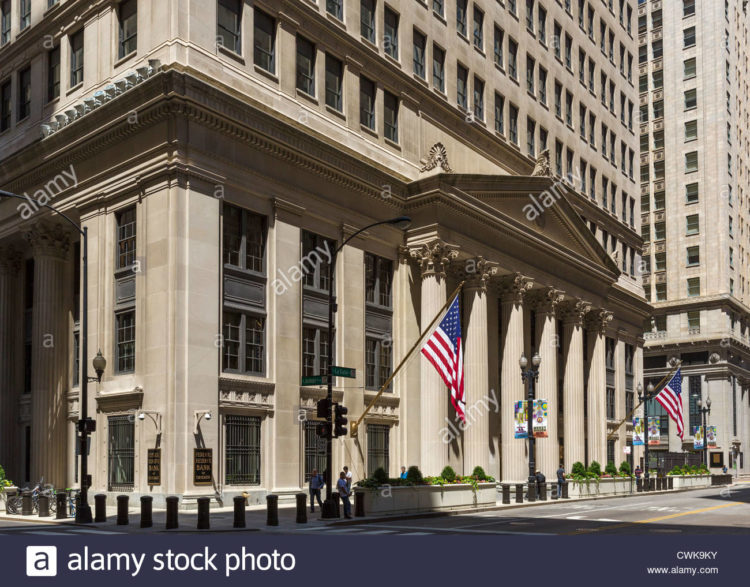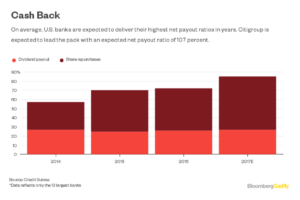Bank Investors Are One Step Closer to a Payout Bonanza: Gadfly

(Bloomberg Gadfly) —Investors in the biggest U.S. lenders can stress less and start banking on payouts.
Results from the first phase of the Federal Reserve’s annual stress tests are in, and all 34 of the banks subject to this quantitative portion survived its hypothetical “severely adverse” scenario. The assumptions included 10 percent unemployment, a 50 percent stock market tumble and a 35 percent decline in commercial real estate prices.
Reassuringly, each bank proved it has a sufficient capital cushion to withstand a dramatic recession that would cause combined losses of $493 billion.
It was a close shave for some: Morgan Stanley, Goldman Sachs Group Inc. and State Street Corp. were at the bottom of the pack with projected leverage ratios within 1.2 percentage points of the required 3 percent minimum, as Bloomberg News has reported.
But broad confirmation that the biggest banks are well-placed to survive such extreme levels of economic shock makes a strong case for one of the many recommendations from last week’s lengthy Treasury Department report. That is, the stress test process — often referred to as Comprehensive Capital Analysis and Review, or CCAR — can be pared back to a two-year cycle from its current annual pace. It’s a logical move considering the stress tests are run over a nine-quarter period which — as a grade-schooler could tell you — spans more than two years.
Like the majority of the Treasury’s recommendations, the tweak can be implemented by bank regulators without the need for legislative approval. And for what it’s worth, testimony from Fed governor Jerome Powell indicates he agrees: On Thursday, he said regulators shouldn’t impose unnecessary costs on banks and showed a willingness to remove such burdens if there’s no impact to a lender’s safety and soundness.
Now, the countdown begins to next Wednesday, when results from the qualitative part of the tests are delivered and banks learn if their requests to pay out excess capital have passed regulatory muster. Notably, this could be the very last time banks have to endure this second, less-predictable portion: Treasury echoed former Fed governor Daniel Tarullo in recommending that it simply be absorbed into routine supervision, which I believe is reasonable.
Even if it’s not the last hurrah, my bet is that Fed-approved payouts will end up at or close to Wall Street’s expectations. If lessons of the past can be applied to the future, Morgan Stanley and Goldman will likely receive conditional approval for their plans. For context, that’s what happened last year, when Morgan Stanley’s leverage ratio was the closest of all banks to the prescribed minimum. Although it was forced to resubmit plans for managing capital, investors spared the stock punishment in part because it got the go-ahead for its desired payouts.
Of course, you don’t know until you know. For now, though, all signs point to another leg up for bank stocks, likely led by longtime laggards Citigroup Inc. and Bank of America Corp. Both are still months, if not years away from narrowing the valuation gap with other large rivals, but approvals for healthy payouts should keep them moving in the right direction. 
This column does not necessarily reflect the opinion of Bloomberg LP and its owners.







No Comment